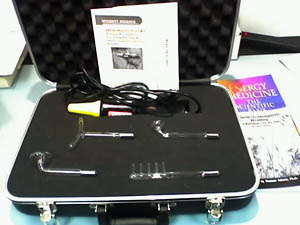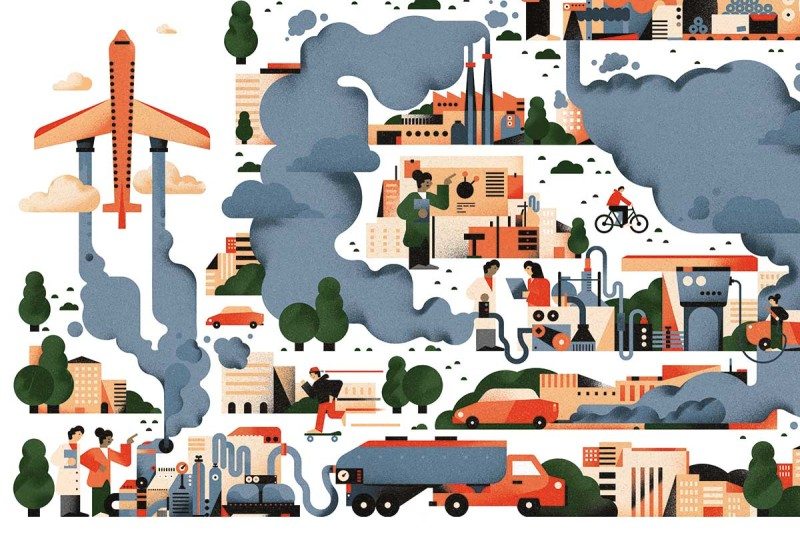|
We are
happy to announce that the best summary of future energy is in
our 40-page IRI Annual
Report 2017 which is now online for a free download. It
is complete with all of our IRI activities from 2017 and full of
useful links to references used in the emerging energy stories.
Another
energy-related issue has now become a global concern because of
climate change. That is the need for drinkable
water for up to 5 billion people by 2050. Besides the
Central African droughts for example, Cape Town’s “Day Zero” has
been pushed just a few more months away as CNN now reports with this being the first
modern city (9 million people) also running out of municipal
drinkable tap water. Here is where IRI comes in, keeping track of
emerging energy solutions. Using a dehumidifier compressor,
there have been a bunch of devices over the years designed to
produce drinkable water directly from air but now there are many
other designs emerging. With climate change, the Water Abundance XPrize has just become major news.
Finalists from UK, Australia, India and the US are finishing
their prototypes and final testing will happen in July. Teams
must produce at least 2,000 liters of water a day using renewable
energy at no more than 2 cents (1.4 pence) per liter. Whichever
group extracts the most at the lowest cost will be awarded $1.5
million. For those looking to domestic breakthroughs, MIT and UC
Berkeley have done it last year with a “crystal water
harvester” .
The
transition of our power systems toward higher shares of renewable
energy sources (RES) is happening at an ever-increasing pace.
Forecasting agencies have had to revise up their RES projections
every year over the past decade. Projections for solar PV in 2030
have increased by a factor of 15 since 2006. The graph from the McKinsey Insights
report is pretty convincing. For those interested in
this major energy market trend, a complimentary “Global Energy
Perspective” is also available online
Our
first story this month is about Google testing an autonomous
electric plane with multiple propellers. It even has vertical
takeoff. We just hope that it has very good radar for navigating.
The
second story is just to announce that the Elon Musk Hyperloop for
super-fast travel in a vacuum tube is on its way. With a test bed
in the Nevada desert, it will be here before you know it.
Our
third story at least shows a new method for thrusting or
propelling spacecraft in earth orbit. It involves harvesting air
molecules in low earth orbit and using them for propulsion. The
conclusion is that it can also work in the Mars atmosphere, which
is as thin as low earth orbit.
The
fourth future energy story offers a transition from the IRI
advocacy of the Israeli firm called Innowattech that offered 500
kW per kilometer of highway using piezoelectric panels under the
road, which never made a success out of the invention. Now the
state of California Energy Commission will be testing the same
invention in a section of roadway this year (also reported in our
IRI Annual Report 2017 in detail on page 26 with www.pyro-e.com ). Soon we hope to see our
highways generate electricity all over our country.
Lastly,
our fifth story gives you an insight into the viable new industry
category called Carbon Capture and Use (CCU). A
complete summary is in the IRI Annual, on page 20, with a
list of seven technologies using CO2 with the industry names and
their locations.
|
|
1) Self Flying Electric Vehicle by Google
|
|
|
|
Google's founder self flying taxi takes off in New
Zealand
|
The
cool-looking two-seat machine features 12 wing-mounted rotors to
enable vertical takeoff and landing, and a large pusher-prop to
help it fly like a regular airplane.
Cora,
which was unveiled this week and is currently undergoing flight
tests in New Zealand, is fully electric and autonomous. It can
carry up to two passengers, has a reported range of 60 miles, and
a top speed of 93 mph. Operating with a noise level far below
that of a helicopter and without the need of a runway, the
aircraft could take off and land in busy urban settings without
causing any great disruption to people in the vicinity.
|
|
2) Hyperloop Becoming a Reality
|
|
Five years in, things are starting to happen.
|
|
Plenty
has happened in the five years since Elon Musk first published his white paper on a system he called
hyperloop. Since releasing that manifesto to the world, hundreds
of people and hundreds of millions of dollars have been put to
work, all in the service of bringing Musk's retro-futurist dream
of a vacuum tube for people to life. And despite being less than
a fever dream half a decade ago, the pace of innovation is
notably increasing, with 2018 already including several big
announcements regarding its future.
|
|
|
3) Air Thruster Paves Way for Missions to Mars
|
|
|
|
By Teressa Puldarova Space. com March 2018
For the
first time, the European Space Agency (ESA) has tested a novel
air-breathing electric thruster that could allow near-Earth
orbiting satellites to stay in space almost indefinitely. The
thruster, designed to harvest atmospheric molecules and use them instead
of onboard propellant, could also make future Mars exploration
easier, ESA officials said.
Satellites
need propulsion to hold their position or move around in space.
Conventionally, satellites use rocket-like chemical propulsion,
but electrical thrusters are becoming increasingly popular due to
their better efficiency. However, current electrical propulsion
systems still need to use a propellant, such as xenon, and their mission lengths are
therefore limited by how much propellant they can carry. Due to
weight constraints, satellites can carry only a limited amount.
Those orbiting close to the Earth, in the range of a few hundred
kilometers (about 125 miles), consume it at a higher rate, as
they need to compensate for the atmospheric drag that slows them
down and pulls toward the Earth.
|
|
|
4) California Testing Piezoelectrics on Highways to
Generate Power
|
|
|
|
Energy harvesting makes the jump from mere man-size
stuff to infrastructure
By Philip Ross IEEE March, 2018
Most energy
harvesting schemes are on a human scale, like using your
swinging arms to power a wristwatch or your dancing legs to
power a nightclub’s sound-and-light show. Why not go big by harvesting
the road vibrations caused by cars and trucks?
That’s the
idea behind California’s newly funded experiment to turn road
rumble into watts. It would rely on piezoelectric crystals, which
produce a bit of current when you squeeze them. Such
crystals are often used in audio equipment to turn sounds
into signals or vice-versa, but if you put enough of them
together, they could run streetlights, sensors, and other useful
highway equipment.
|
|
5) Carbon Capture & Use (CCU) Companies can suck
CO2 out of the Air
|
|
|
|
We need to suck CO2 from the air to solve the
climate crisis, but what do we do with it? A budding industry is
turning the gas into useful stuff
TAKE a
breath. You have just inhaled about 0.6 grams of air, including 0.4
milligrams of carbon dioxide. Had you lived in the 1600s, you would
have taken in less than 0.3 milligrams of CO2 with each breath. Although it might not seem
like a big difference, the additional greenhouse gas now in the
atmosphere is altering the climate at a pace that threatens global
havoc.
What if we
could take CO2 right back out of the air
and put it to use? What if, instead of being the most dangerous
waste product in human history, it could become the basis for new
industries that clean up the planet instead of harming it – and
turn a profit too?
|
|
|
|
If you enjoy this service, take
individual action by clicking on the donate button. We are a
501 (C)3 Non Profit Institute and your donations are fully
deductible to the maximum allowed by law.
|
|
Sign up for our newsletter here
Check out our Social Media pages
below
|
|
|










